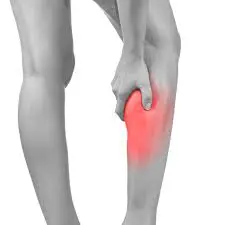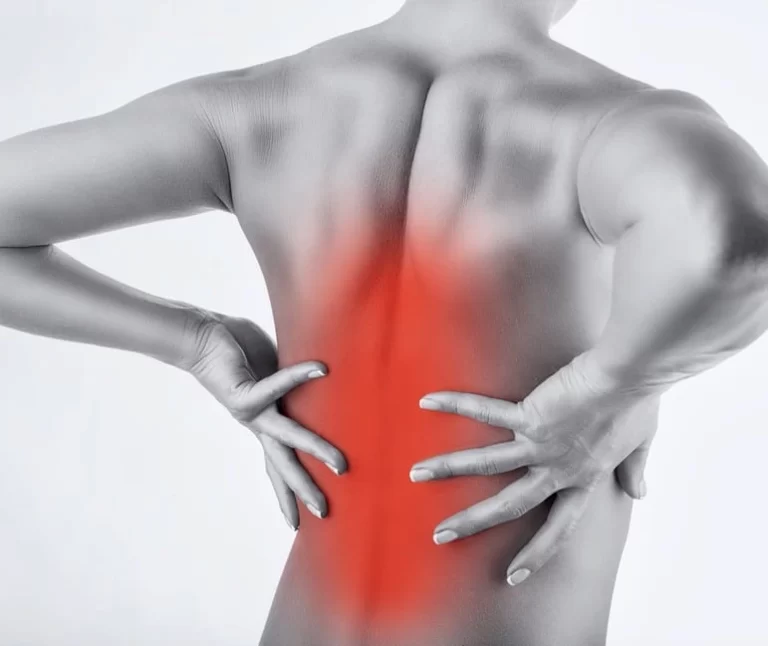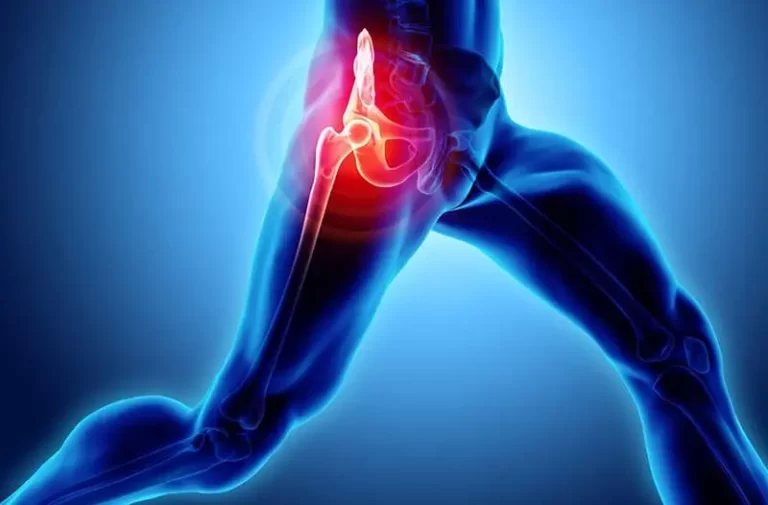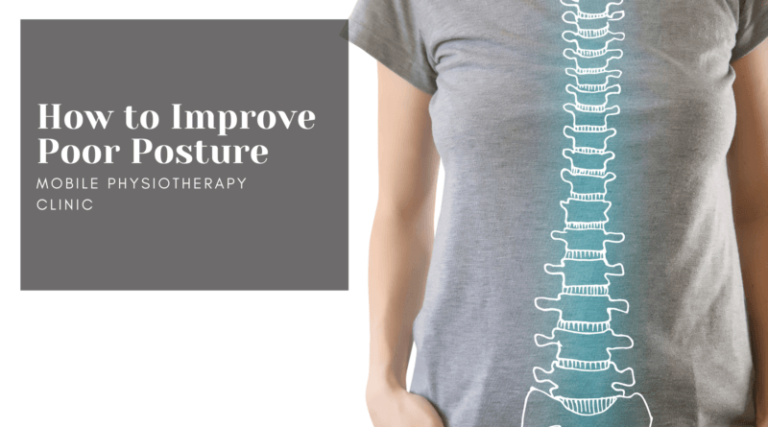Vitamin D Deficiency
What is Vitamin D Deficiency?
Vitamin D deficiency is a prevalent condition arising when the body lacks an adequate supply of this essential vitamin, crucial for maintaining robust bones, muscles, and overall health. Causes include insufficient sun exposure, specific medical conditions, and dietary restrictions.
Follow my blog with BloglovinSymptoms range from fatigue and bone pain to an elevated risk of infections and chronic diseases. Addressing this deficiency often involves augmenting vitamin D intake through supplements, dietary adjustments, and exposure to sunlight.
Insufficient vitamin D implies a deficiency in the body, primarily affecting bone and muscle health. This crucial vitamin supports normal bone growth and maintenance while playing vital roles in the nervous, immune, and musculoskeletal systems.
Methods for acquiring vitamin D encompass sun exposure on the skin. However, individuals with darker skin tones and older individuals might not obtain adequate vitamin D through sunlight, influenced by geographical factors. Additionally, dietary sources and nutritional supplements offer alternative means of ensuring sufficient vitamin D levels. Despite these options, vitamin D deficiency remains a prevalent concern.
Why is Vitamin D so important?
Vitamin D holds a crucial role among the many essential vitamins necessary for maintaining overall health. Its significance lies in regulating calcium balance in the blood and aiding in the development and upkeep of strong bones.
Specifically, the body relies on vitamin D to facilitate the utilization of calcium and phosphorus, crucial elements in bone construction and the support of healthy tissues. Persistent vitamin D deficiency disrupts this balance, leading to reduced calcium levels and phosphorus absorption, resulting in hypocalcemia—low calcium levels in the blood—and triggering secondary hyperparathyroidism.
Both hypocalcemia and hyperparathyroidism, when severe, manifest symptoms such as muscle weakness, cramps, fatigue, and even depression. In an attempt to restore calcium equilibrium in the bloodstream, the body resorts to extracting calcium from the bones, accelerating bone demineralization where bone breakdown outpaces regeneration.
This process may culminate in soft bones, known as osteomalacia, in adults and rickets in children. Osteomalacia and osteoporosis elevate the risk of bone fractures, while rickets, affecting growing children, result in bowed or bent bones due to the ongoing demineralization during a critical phase of bone development. The consequences highlight the pivotal role of vitamin D in maintaining skeletal health and preventing associated conditions.
What does vitamin D deficiency affect?
Vitamin D deficiency can impact individuals across all age groups, encompassing infants, children, and adults. Particularly prevalent among those with darker skin, characterized by higher melanin content, and individuals who regularly wear clothing providing extensive skin coverage, this deficiency is notably common in regions such as the Middle East.
How common is Vitamin D deficiency?
Vitamin D deficiency represents a prevalent global issue, affecting around 1 billion individuals worldwide with insufficient vitamin D levels and half of the global population experiencing a deficit. In the United States alone, approximately 35% of adults contend with vitamin D insufficiency.
What are the functions of Vitamin D?
Vitamin D serves various crucial functions, including promoting calcium absorption to support bone health, enhancing muscle function, modulating the immune system, facilitating cell growth, and mitigating inflammation to manage conditions like rheumatoid arthritis and psoriasis. Additionally, it plays a role in regulating blood pressure and contributing to cardiovascular health.
In the realm of diabetes prevention, there has been professional speculation regarding the potential benefits of vitamin D. However, a comprehensive 2019 analysis involving 2,423 individuals at risk of type 2 diabetes revealed that those taking a daily vitamin D supplement of 4,000 international units (IU) experienced increased vitamin D levels. Despite this rise, the supplementation did not demonstrate a significant reduction in the risk of developing diabetes.
Causes of Vitamin D deficiency
Vitamin D deficiency is defined by blood levels below 20 ng/mL, with levels ranging from 21 to 29 ng/mL considered inadequate. The causes are multifaceted and influenced by various underlying diseases and lifestyle factors.
Common triggers for vitamin D deficiency include factors such as dark skin, older age, overweight or obesity, limited consumption of fish or dairy, residing far from the equator with minimal sunlight year-round, prolonged indoor activities, overnight shift work, and health conditions like chronic kidney disease, liver disease, or hyperparathyroidism. Disorders affecting nutrient absorption, such as Crohn’s disease or celiac disease, as well as gastric bypass surgery, can also contribute. Medications like statins and steroids may impact vitamin D metabolism.
Individuals residing near the equator with consistent sun exposure are less likely to experience a deficiency, given that their skin produces an ample amount of vitamin D. However, those who regularly use sunscreen, while at an increased risk of deficiency, prioritize its use for skin protection, reducing the risk of skin damage and cancer due to sun exposure.
Consulting a healthcare professional about vitamin D status is advisable, especially for those at an elevated risk of deficiency, to ensure proactive management of potential health implications.
Signs and symptoms of vitamin D deficiency
Detecting vitamin D deficiency can be challenging, as symptoms may not manifest for months or even years, and in some cases, there may be no noticeable signs. Nevertheless, it is valuable to recognize the potential signs and symptoms:
- Frequent illnesses or infections: Vitamin D plays a pivotal role in supporting immune health by influencing the body’s ability to fend off viruses and bacteria. Numerous observational studies have linked deficiency to respiratory tract infections like colds, bronchitis, and pneumonia. Recent research has even associated vitamin D deficiency with an elevated risk of experiencing severe effects from COVID-19.
- Fatigue and tiredness: While fatigue can stem from various causes, vitamin D deficiency is often overlooked as a contributing factor. Studies have connected low vitamin D levels to fatigue symptoms in older adults and revealed a strong correlation between deficiency and self-reported tiredness, particularly in women.
- Bone and back pain: Insufficient vitamin D levels may contribute to bone and lower back pain, as vitamin D is crucial for calcium absorption and essential for maintaining bone health. Research has suggested a connection between lower vitamin D levels and more intense lower back pain, especially in individuals with arthritis, muscle pain, and chronic widespread pain.
- Depression: Vitamin D deficiency has been linked to depression, particularly in older adults, although research results are mixed. Some studies indicate that vitamin D supplements may help alleviate symptoms of depression.
- Impaired wound healing: Low vitamin D levels may impede wound healing after surgery or injury. Studies have shown that vitamin D is vital for producing compounds essential in the wound healing process, and individuals with vitamin D deficiencies may experience delays in recovery.
- Bone Loss: Vitamin D plays an essential part in calcium absorption & bone metabolism. Low bone mineral density, indicative of calcium loss from bones, is associated with low vitamin D levels. Adequate vitamin D intake is considered a preventive strategy for maintaining bone mass and reducing the risk of fractures.
- Hair Loss: While various factors can influence hair health, studies suggest a connection between low vitamin D levels and hair loss in women. Specifically, vitamin D levels may impact conditions like alopecia areata, and topical application of vitamin D has shown positive effects on hair regrowth.
- Muscle Pain: Vitamin D deficiency is considered a potential cause of muscle pain, as the vitamin D receptor is present in nerve cells involved in pain sensation. High-dose vitamin D supplements may help alleviate various types of pain in individuals with a vitamin D deficiency.
- Weight Gain: Weight gain is identified as a risk factor for vitamin D insufficiency. Some studies suggest a potential link between low vitamin D status and increased belly fat and weight, particularly in males.
- Anxiety: Vitamin D deficiency has been associated with anxiety conditions, with lower levels of calcidiol, a type of vitamin D, observed in people with anxiety and depression. Adequate vitamin D levels may contribute to stress reduction and improved mental well-being, as indicated in studies on pregnant females.
In cases of concerns or symptoms, consulting with a healthcare professional about vitamin D status is advised for appropriate assessment and guidance.
Diagnosis of Vitamin D Deficiency
The assessment of vitamin D status commonly relies on measuring the serum concentration of calcifediol, also known as 25-hydroxyvitamin D (abbreviated 25(OH)D). This approach provides a reliable indicator of vitamin D status, as the majority of vitamin D is converted to 25(OH)D in the serum. Unlike 25(OH)D, the serum level of 1,25(OH)D is not typically employed to define vitamin D status, as it is often influenced by other hormones such as parathyroid hormone and can remain normal even in cases of vitamin D insufficiency.
For diagnostic purposes, a serum level of 25(OH)D is the primary laboratory test used to determine if an individual has vitamin D deficiency. In certain cases, healthcare professionals may opt to initiate vitamin D supplementation for at-risk individuals without conducting this test, given the rare occurrence of vitamin D toxicity. Vitamin D toxicity, typically stemming from excessive supplement intake, manifests with symptoms primarily attributed to hypercalcemia. Serum 25-OHD levels exceeding 150 ng/mL (375 nmol/L) are often indicative of vitamin D toxicity, although exceptions exist where levels may appear normal. Monitoring serum calcium periodically is advisable for individuals receiving high-dose vitamin D supplementation.
Screening:
The United States Preventive Services Task Force advises that for asymptomatic individuals not falling within an at-risk population, there is insufficient evidence to support the benefits of screening for vitamin D deficiency. Consequently, screening is not routinely recommended for this subgroup. Clinical judgement, considering individual risk factors and symptoms, guides healthcare professionals in determining the necessity for vitamin D screening in at-risk populations.
Treatment of Vitamin D Deficiency
- UVB Exposure: The risk of vitamin D overdose from UV exposure is negligible, as the skin establishes equilibrium, breaking down the vitamin at a rate equivalent to its synthesis.
- Light Therapy: Exposure to specific wavelengths of narrowband UVB light aids the body in producing vitamin D, offering a remedy for vitamin D insufficiency.
- Vitamin D supplements:
- Vitamin D2 Supplements
- Recommended daily amounts: 400 IU for children, 600 IU for adults, and 800 IU for individuals over 70 years old.
- The Canadian Paediatric Society advises pregnant or breastfeeding women to consider 2000 IU/day and all exclusively breastfed infants to receive a 400 IU/day supplement.
- Vitamin D2 Supplements
Treatment strategies for vitamin D deficiency vary based on its severity. The process involves an initial high-dose phase until the desired serum levels are achieved, followed by maintenance to sustain the acquired levels. The lower the pre-treatment serum 25(OH)D concentration, the higher the necessary dosage for a prompt elevation to an acceptable serum level. The initial high-dose treatment may be administered daily, weekly, or as single or multiple doses, with different therapeutic options available. While evidence suggests that vitamin D3 more effectively raises blood levels than vitamin D2, debates persist over their equivalence in maintaining 25(OH)D status.
Food sources of vitamin D:
- Good Dietary Sources:
- Oily fish, such as mackerel or salmon
- Beef liver
- Cheese
- Mushrooms
- Egg yolks
Fortified foods, including select breakfast cereals, orange juice, milk, soy drinks, and margarine.
Incorporating these sources into the diet contributes to a well-rounded approach to maintaining optimal vitamin D levels.
Complications of Vitamin D Deficiency
While often asymptomatic, vitamin D deficiency can lead to various complications and is associated with the following conditions:
- Rickets:
- A childhood disorder characterized by stunted growth and deformities in long bones.
- Early signs include thinning of the skull (craniotabes) and abnormal softening.
- Osteomalacia:
- An adult-onset bone-thinning disorder.
- Marked by proximal muscle weakness and bone fragility.
- Elevated risk in vitamin D-deficient women with multiple pregnancies.
- Osteoporosis:
- A disease characterized by decreased bone mineral density and increased bone fragility.
- Muscle Issues:
- Aches, weakness, and twitching result from decreased blood calcium levels.
- Periodontitis:
- Local inflammatory bone loss leads to potential tooth loss.
- Pre-eclampsia:
- Association between vitamin D deficiency and increased risk of pre-eclampsia in pregnant women.
- The precise relationship is not fully understood.
- Respiratory Infections and COVID-19:
- Vitamin D insufficiency is linked to an increased risk of severe acute respiratory infections and COPD.
- Emerging studies suggest a connection between vitamin D deficiency and more severe COVID-19 outcomes, including an 80% increase in the speed of hospitalisation and mortality.
- Schizophrenia:
- Association between vitamin D deficiency and schizophrenia.
- Individuals with schizophrenia often exhibit lower vitamin D levels.
- Environmental risk factors such as seasonality of birth, latitude, and migration connected to schizophrenia involve vitamin D deficiency.
- Vitamin D is crucial for the normal development of the nervous system.
Toxicity of vitamin D
Accumulating excessive amounts of vitamin D, known as vitamin D toxicity, can pose health risks. Symptoms of toxicity encompass nausea, vomiting, poor appetite, constipation, weakness, and weight loss.
Prolonged elevated levels of vitamin D can have detrimental effects on the kidneys. Elevated blood calcium levels, a condition known as hypercalcemia, may lead to confusion, kidney failure, and an irregular heartbeat (arrhythmia).
Instances of vitamin D toxicity typically arise when individuals excessively use vitamin D supplements. It’s important to note that obtaining an excess of vitamin D through sun exposure is unlikely, as the skin regulates the production of vitamin D.
Being mindful of recommended dosage guidelines and consulting healthcare professionals can help mitigate the risk of vitamin D toxicity, ensuring the benefits of supplementation without compromising health.
Factors Influencing Vitamin D Levels
- Sunlight Exposure: Individuals with limited exposure to sunlight due to specific environments, dress patterns, or excessive sunscreen use may face challenges in vitamin D production.
- Age: Older individuals are at a higher risk of vitamin D deficiency due to reduced sunlight exposure, decreased dietary vitamin D intake, and thinner skin, which hinders vitamin D absorption.
- Body Fat Percentage: Fat-soluble vitamin D (D3 and D2) requires fat for absorption. Lower fat percentages increase the risk of vitamin D insufficiency, as the body may struggle to absorb these vitamins effectively.
- Malnutrition: Rickets and osteomalacia were historically prevalent but decreased with changes in diet, emphasising the impact of dietary patterns. Malnourished individuals, particularly those with darker skin, may still face the risk of vitamin D deficiency.
- Diet: Inadequate consumption of vitamin D-rich foods, such as fortified dairy products and grains, can lead to insufficient vitamin D levels.
- Lifestyle: People with limited outdoor exposure, whether due to work, health issues, or cultural reasons, may have reduced chances of skin exposure to sunlight. Those covering their bodies extensively for various reasons also face a higher risk.
- Geographical Factors: Regions with limited access to UVB rays, especially during the winter, may contribute to vitamin D deficiency. Conversely, individuals in hot climates who avoid strong sunlight may also be at risk.
- Pollution: Airborne particles can block UVB rays, impacting skin exposure. People in highly polluted areas may spend less time outdoors.
- Medications: Certain medications, including steroids and cholesterol-lowering drugs, can reduce the body’s ability to absorb or synthesise vitamin D.
- Smoking: Smokers may experience higher levels of deficiency, potentially linked to smoking’s impact on the gene responsible for producing vitamin D-3.
- Obesity: Research suggests lower vitamin D levels in individuals with obesity (BMI of 30 or more). Mobility issues and potential absorption challenges may contribute to this association.
- Kidney and Liver Health: Liver and kidney disorders can impact vitamin D synthesis or conversion, leading to lower vitamin D levels.
- Pregnancy: Increased vitamin D needs during pregnancy may affect levels, and while supplements may be considered, the overall impact is uncertain.
- Breastfeeding Infants: Breast milk’s low vitamin D content puts breastfeeding infants at risk of deficiency, prompting recommendations for vitamin D supplementation from the early days of life until they consume sufficient formula milk.
Preventing Vitamin D Deficiency
To stave off vitamin D deficiency, adopting a diet rich in nutrient-dense foods and ensuring regular exposure to sunlight is key. Consider the following tips for effective prevention:
- Maintaining Healthy Body Weight: Engage in activities like cycling or walking to promote both exercise and regular exposure to sunlight, aiding in natural vitamin D synthesis.
- Treating Medical Conditions: Individuals with health conditions affecting nutrient absorption should address the underlying issues. Treating these conditions can enhance nutrient levels, including vitamin D.
- Proactive Preventive Health Measures: Individuals with a family history of osteoporosis or vitamin D deficiency should proactively consult with their physician about screening. Early detection can guide effective preventive measures.
By incorporating these strategies into their daily lives, individuals can significantly reduce the risk of vitamin D deficiency and promote overall health.
FAQ
Which doctor is best for vitamin D deficiency?
While orthopedists can treat as well, endocrinologists can provide more accurate assessments. encounter an endocrinologist.
Which is the fastest way to cure vitamin D deficiency?
Supplements. The recommended course of treatment for vitamin D insufficiency is oral supplements. These are readily available over-the-counter, but you should see a doctor for advice on dose. You might wish to take magnesium as well because it aids in the activation of vitamin D (72).
Can I go to gym with vitamin D deficiency?
It has been shown that low vitamin D levels impair muscle strength, power, and endurance; they also raise the risk of stress fractures and other musculoskeletal injuries; and they have an impact on acute muscle injuries and inflammation after high-intensity exercise.
Which exercise is best for vitamin D?
The risk of a heart attack can be decreased by 22% by engaging in three or more hours per week of intense activity, such as jogging, basketball, or soccer. Additionally, they discovered that people who engaged in intense exercise had greater levels of vitamin D and HDL (good) cholesterol.
Who suffers from vitamin D deficiency?
A lack of vitamin D has an impact on people of all ages. Breastfed babies require supplements since breast milk does not provide enough vitamin D. A person’s skin has a harder time producing enough vitamin D as they get older, which could result in a shortage.
How long is recovery from vitamin D deficiency?
After you start taking supplements, it may take a few weeks for your vitamin D levels to increase. If you do not have any underlying health conditions that could impede your recovery, you should anticipate a recuperation period of 4-6 weeks. You could be able to expedite your recuperation by: Getting outside in the sun.
Can vitamin D deficiency be cured permanently?
The prognosis, or outlook, for vitamin D insufficiency is typically very good. Treatment typically has a positive impact on both the symptoms and the vitamin levels. But it can take months for the bones to heal and for pain and other symptoms to go better.
Does walking produce vitamin D?
It’s challenging to alter your routine, particularly if you have a busy workweek. However, even a quick 15-minute stroll outside can increase your vitamin D levels.
Does low vitamin D cause weak muscles?
Low vitamin D levels raise the risk of bone discomfort, bone fractures, muscle soreness, and muscle weakening because they impair the body’s ability to absorb calcium and phosphorus. Severe vitamin D insufficiency (levels less than 10 ng/mL) in older persons may also raise their chance of falling.
Is vitamin D good for weak legs?
Researchers explained that the results made sense because vitamin D is known to support muscular contraction and healing. By taking supplements, consuming foods high in the vitamin, or exercising caution while exposed to the sun, people can prevent vitamin D insufficiency.
Reference
- Professional, Cleveland Clinic Medical. “Vitamin D Deficiency.” Cleveland Clinic, my.clevelandclinic.org/health/diseases/15050-vitamin-d-vitamin-d-deficiency. Accessed 12 Nov. 2023.
- Ld, Lisa Wartenberg Mfa, Rd,. “Vitamin D Deficiency: Symptoms, Causes, and Treatments.” Healthline, 2 Jan. 2023, www.healthline.com/nutrition/vitamin-d-deficiency-symptoms.
- Rupapara, Hasti. “Vitamin D Deficiency – Cause, Symptoms, Treatment- Samarpan.” Samarpan Physiotherapy Clinic, 12 Apr. 2023, samarpanphysioclinic.com/vitamin-d-deficiency.








One Comment